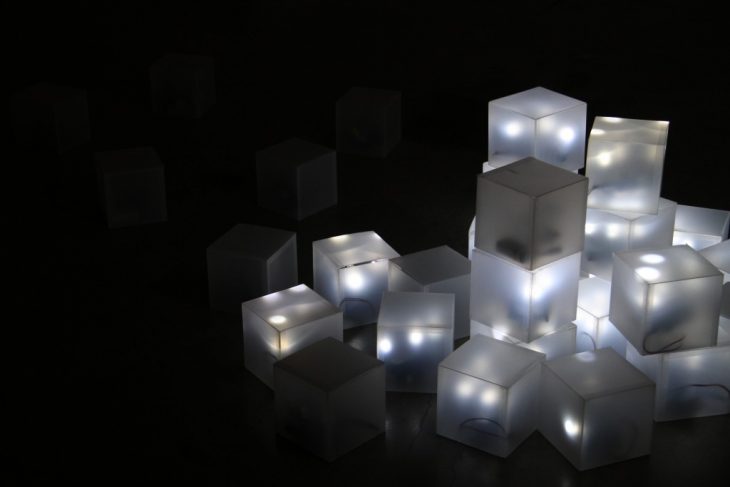
LIGHT BOX
Concept:
Light Box is an interactive installation that utilizes lights, Arduinos, and photo-sensors to engage users in collaborative play. With the shape and scale of a children’s building block, but the aesthetic of a contemporary lamp, Light Box encourages both children and adults to create unique forms and structures with the toy-like objects.
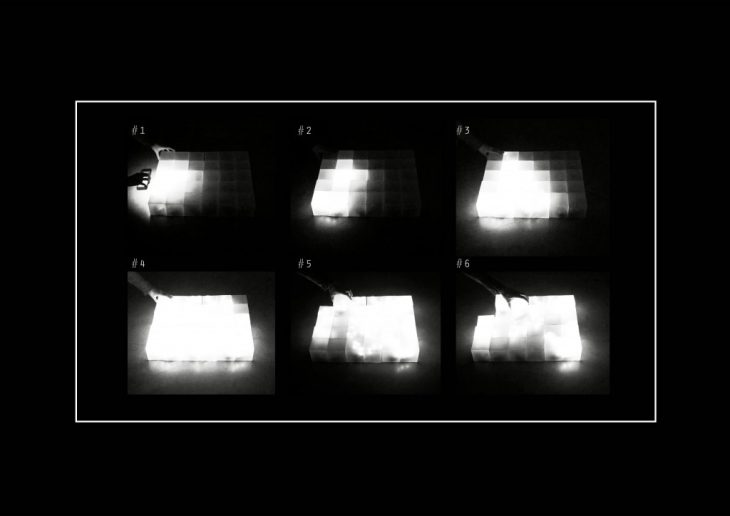
Interaction:
Users interact with the installation by creating and breaking chain reactions of light with the individual lamps. A light chain is activated by using an external light source – like a flashlight or a phone – which then triggers any boxes within the predetermined range of sensitivity. Because of their rectilinear shape, lamps can be placed in rows, stacked, and placed at random. In presentations of this project, users have immediately experimented with how the chain reaction works and each lamp’s range of sensitivity, and then proceed to collaborate with the rest of the group to create interesting forms and reactions. A phone light can also be shone across multiple lights at once, allowing users to interfere with and reset chain reactions. Breaking the chains can also be fun for the group, with users working together to frantically break the chain reaction while the lamps work against them.
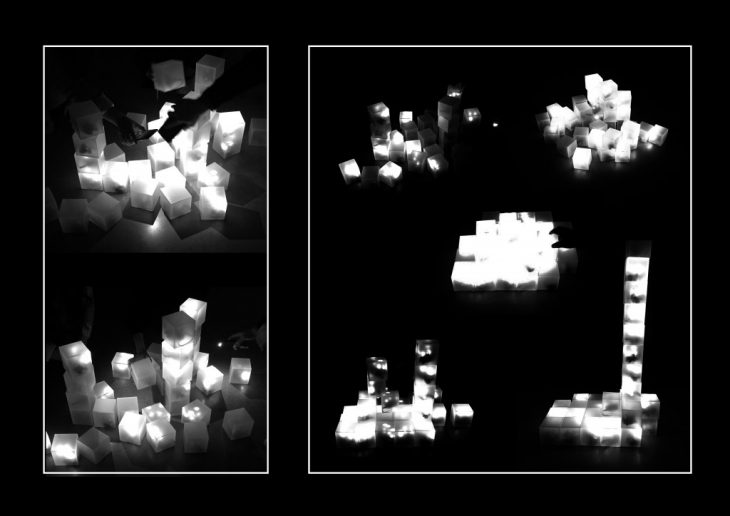
Hardware:
For the hardware, an arduino/microcontroller is attached to a soldered perf board that contains 3 LEDs as its output and 2 photoresistors as its input. A 9V battery is also connected to the arduino as its power source.
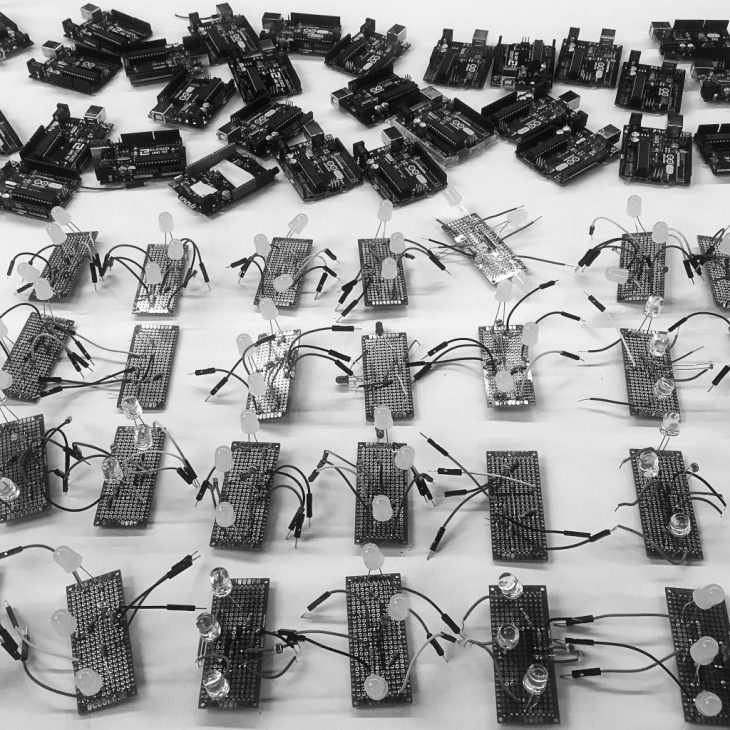
Software:
The code is uploaded from Arduino 1.8.5 onto the microcontroller tells the arduino to receive the photoresistors as 2 separate inputs, to trigger all 3 LEDs with a fade-in and fade-out effect when either photoresistor receives an input above a certain threshold – which is calibrated to the ambient light of the current room of the project – and to trigger the lights at a randomized delay. The randomized delay occurs within a range of .5 to 1 seconds and prevents the lamps from reacting to themselves, which would cause infinite loops, instead of a chain reaction. The delay is randomized instead of constant to create a twinkling effect within the chain reaction.
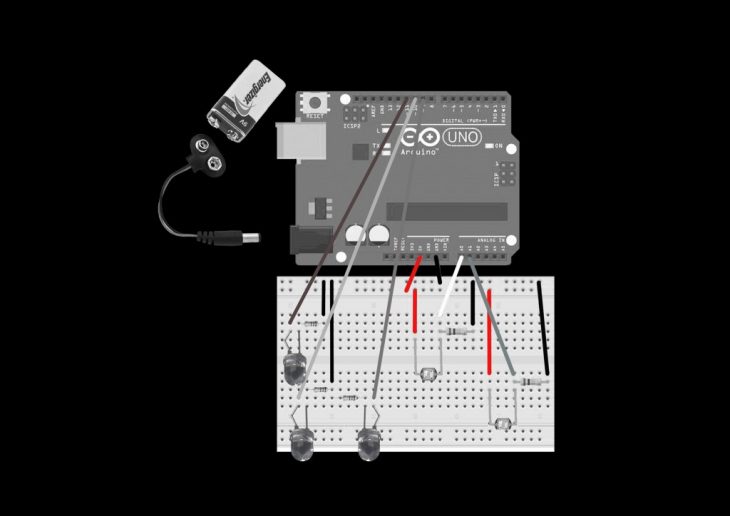
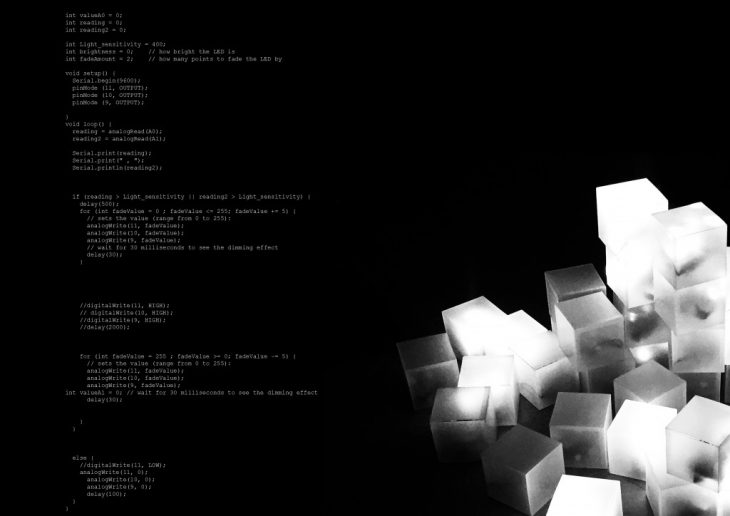
“LIGHT BOX” is a project of IaaC, Institute for Advanced Architecture of Catalonia
developed at Master in Advanced Architecture in 2018 by:
Students: Gabriele Jureviciute, Tal Dotan, Sabrina Naumovski and Martin Garcia-Miro Zaldumbide
Faculty: Angel Muñoz, Cristian Rizzuti